
by Fiona Moore
I’m a lecturer at Royal Holloway University of London, one of two all-female institutions in the group, but I also moonlight in pirate radio. I recently saw the horror/comedy film Carry On Screaming at the second-run theatre in Cinderford while on a recording session in the Forest Of Dean (and I can certainly recommend The Palace Cinema to all travelers on the Journey). And so, since it’s still in general circulation, though it was released last year, I will review it here.
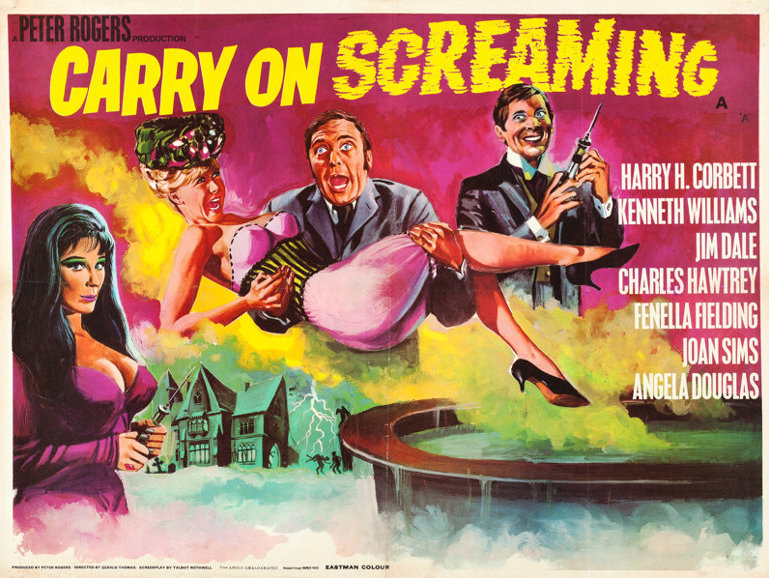
The plot, such as it is, has Detective Sergeant Sydney Bung (Harry H. Corbett) investigating the mysterious disappearances of young women from Hocombe Wood. Bung’s investigation leads him to the Bide-A-Wee Rest Home, residence of the mysterious Valeria and Orlando Watt (Fenella Fielding and Kenneth Williams), their strange servants, and the mummy of an Egyptian pharaoh. A police scientist successfully regenerates a hirsute finger found at the scene of the most recent crime, producing an ape-like hominid identical to the Watts’ henchman Oddbod; a lavatory attendant previously employed by the Watts as a gardener dies under mysterious circumstances; and one of the victims turns up apparently transformed into a shop-window dummy. Bung attempts to entrap the kidnappers by disguising his underling, Detective Constable Slobotham (Peter Butterworth), as a woman; Bung’s wife (Joan Sims), suspecting him of having an affair, follows along and is kidnapped along with Slobotham. The police confront the Watts, only to discover that they are transforming their victims into shop-window dummies. Watt is killed when the Egyptian mummy, revived by a lightning strike, pushes him into one of the vats used in the transformation process. Although it transpires that the victims can be returned to life with the application of electricity, Bung opts to leave his wife in dummy form, and moves in with Valeria.
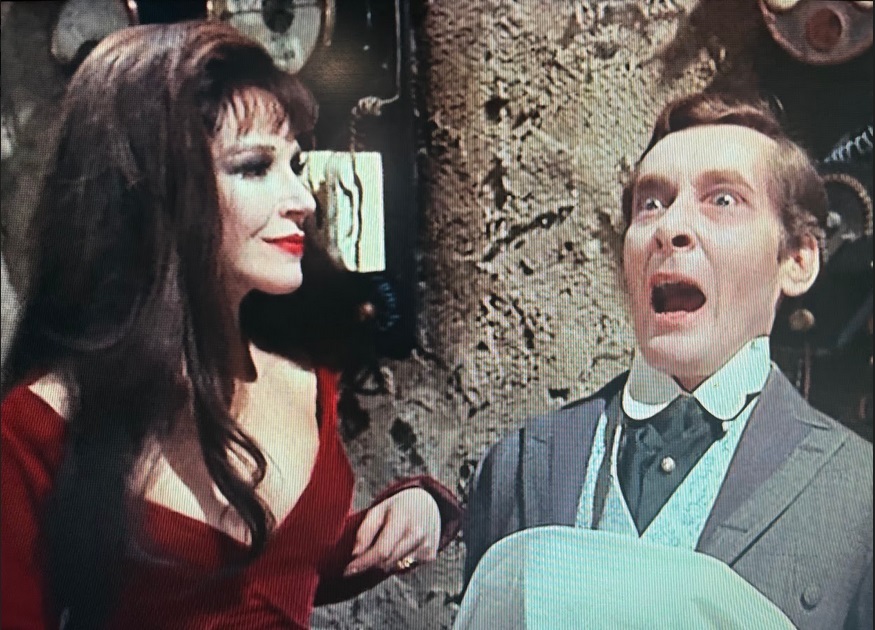
Orlando Watt rises from the grave
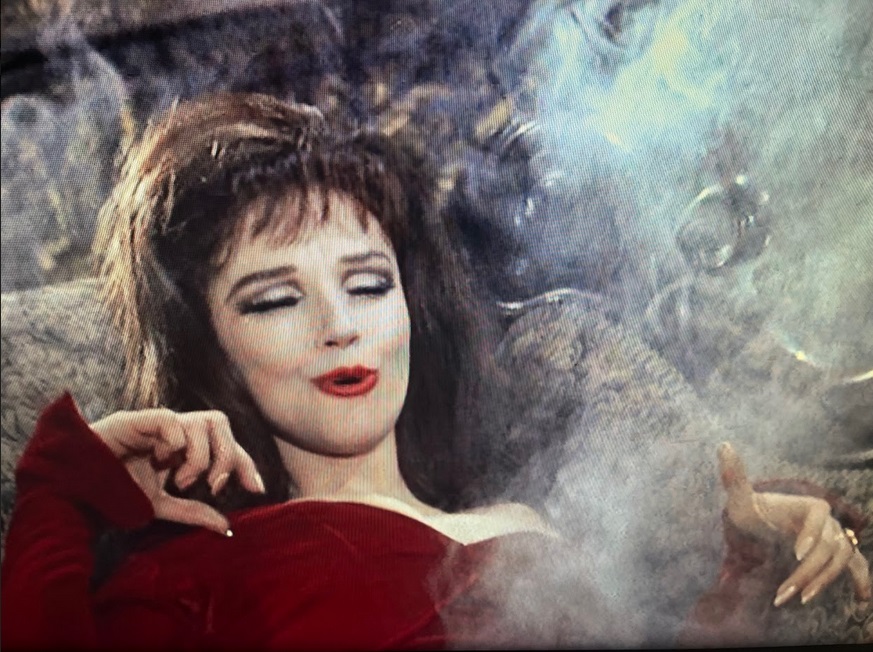
Fenella Fielding is smoking
On the whole, it’s a very silly film. It lacks the coherence of the best comedy films, where a throwaway line or scene will pay off later and the story holds together. Carry on Screaming does have a narrative through line, but it is also full of set pieces and storylines that seem to be only there for the sheer hell of it. Kenneth Williams’ character, Doctor Watt, is dead and needs to be regularly revived with electricity; his hirsute assistant develops a clone; the motivation behind the above mentioned shop-window dummies scheme is never satisfactorily explained. The audience waits in vain for these points to be followed up or explained or linked together. The puns and double-entendres are entertaining (the Egyptian mummy is named Rubbertiti, for instance, and Fenella Fielding’s vampish character takes the line “mind if I smoke?” literally at one point), but only that.
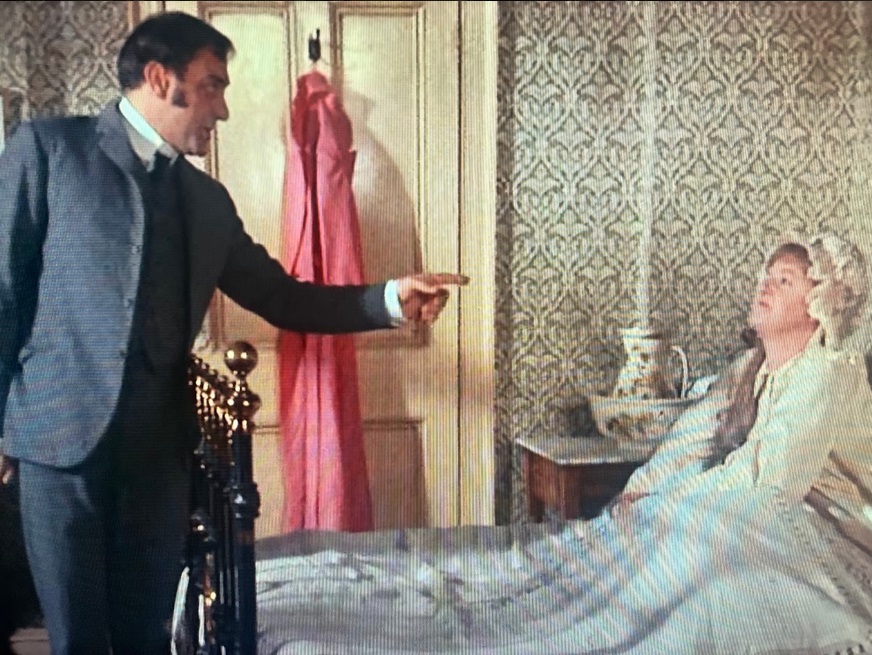
”Admit it, you’re a stereotype!”
Speaking as a women’s libber, I also found myself a little sympathetic for poor old Joan Sims, portrayed as a nagging wife and harridan, but frankly given the generally negligent behaviour of her policeman husband Bung, upbraiding her, going out at all hours and falling into clinches with Fenella Fielding, I thought she had grounds for complaint. In cleverer hands, this hoary trope could have been subverted, but as it is it’s just simply a familiar music hall gag thrown into a modern horror movie. You could probably make a case that the shop-window dummies storyline is some kind of clever riff on the way in which horror movies objectify and silence women, but I’m not sure if this reading is intended or not.
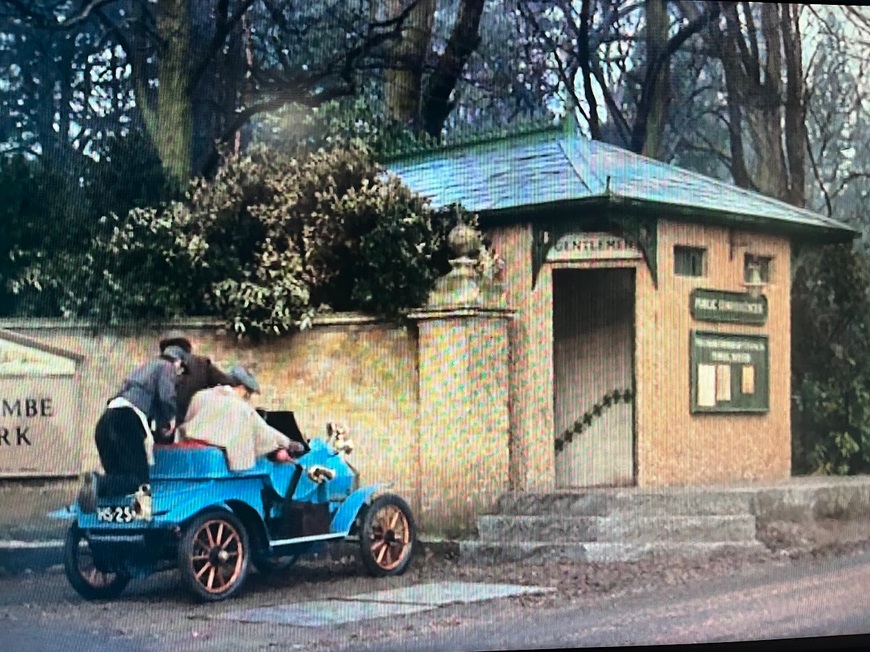
A trip to the gentlemen’s conveniences (actually the South Lodge at Pinewood Studios)
I would definitely recommend this film, though, for television and cinema fans. The gags are full of knowing inside humour about the British horror movie scene, and the contemporary British film and television world generally. There’s a lot of overlap both behind and in front of the camera between Carry On Screaming and the Hammer horror films, notably the cinematographer, Alan Hume, but also Angela Douglas, Fenella Fielding, and Bernard Bresslaw. The fact that it’s filmed in and around Windsor, like the Hammer films, adds to this as well as providing a lot of fun for location-spotters. The film delightedly sends up the horror genre’s fetishization of Victorian and Edwardian classics, with nods to Sherlock Holmes, Doctor Jeckyll, Frankenstein, The Picture of Dorian Gray and The Mummy. The villains’ henchman is named “Oddbod,” conflating British horror quickies with James Bond movies and perhaps suggesting that the latter are trashier than they pretend to be, and the action takes place in “Hocombe [Hokum] Wood”, undoubtedly a slyly derogatory reference to Borehamwood Studios.

”All right, which of us is the most famous TV star?”
There are also playful nods to modern television, with the soundtrack cheekily quoting the Z Cars theme as the police go about their business investigating the disappearances, and the theme from Steptoe and Son as a reminder of Harry H. Corbett’s best-known role. When not quoting well-known television themes, the soundtrack is an on-the-nose pastiche of the sort of over-the-top classical music that usually backs the Dracula and Frankenstein movies. Kenneth Williams’ charismatically camp performance as Doctor Watt has definitely put him on my radar as someone who could easily take over the role of Doctor Who should Patrick Troughton ever decide to hang up his recorder, and indeed Doctor Watt informs us that “Who” is his uncle, or might be, we haven’t seen him in some time (perhaps a reference to the 1965/66 twelve part adventure). Just to bring the point home, Doctor Watt is an expert in regeneration—no doubt a joke about Doctor Who’s change of face last year.
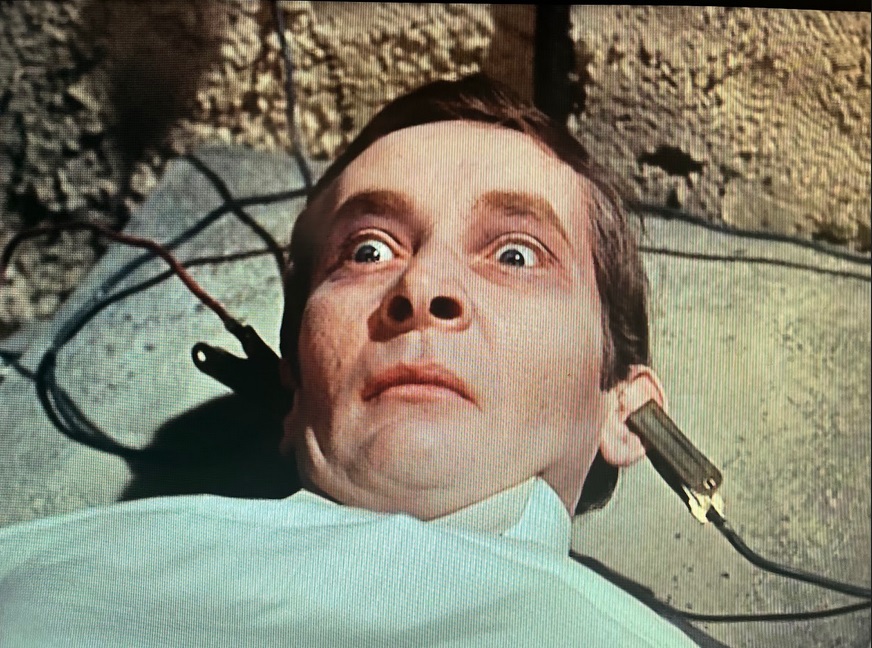
Kenneth Williams, camp comedy icon
Arguably, there is also a subversive political element to the film as well. With growing tolerance of homosexuality in British society and calls for sodomy to be decriminalized, it’s possible to see a message of normalization in jokes like the one where Jon Pertwee, as a police scientist, apparently finds homosexuality in his guide to early hominids (“Homo… Homo… Homo…” [long pause] “Wrong homo!”), or the exchange “Why should a man be dressed as a woman?” “I don’t know, perhaps his parents wanted a girl!” reflecting current debates in medicine about the causes of homosexuality and sex-change patients. Lines like “I hate these law-abiding people, why can’t everyone be horrid like us?” also take on a double meaning when one considers the laws still on the books. Camp Kenneth Williams, well known for playing homosexuals on such venues as Round the Horne, steals the show as a charismatic villain one secretly hopes will get away with it all in the end. While on the face of it, one long sequence takes place in a public toilet seemingly for no reason other than to make childish jokes about bathrooms and voyeurism, it’s also possible to see it as a celebration of cottaging: the idea that strange and sexual things take place in secret in the conveniences, with the police unable to find or arrest the culprits, is a little more on the nose since the Wolfenden Report.
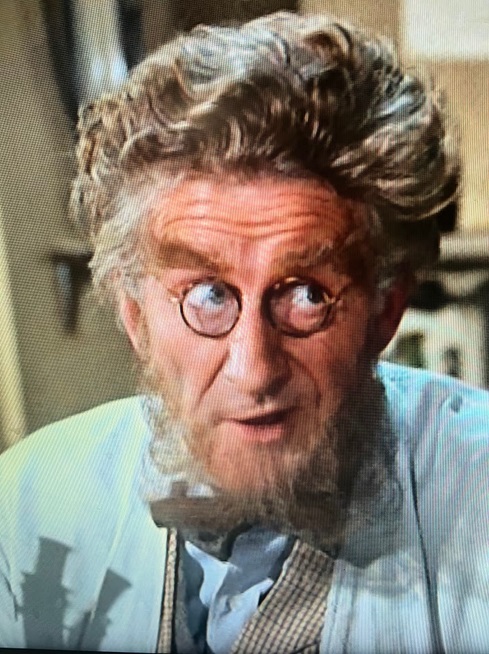
Jon Pertwee reflects on the many meanings of the word “homo”.
Carry On Screaming isn’t a game-changing movie, but if you’re in the know, it’s a lot of fun. Although it’s not really progressive from a women’s lib point of view, it’s surprisingly outspoken on the subject of homosexual rights. The Carry On team are definitely capable of better, but it’s still not a bad addition to the series.

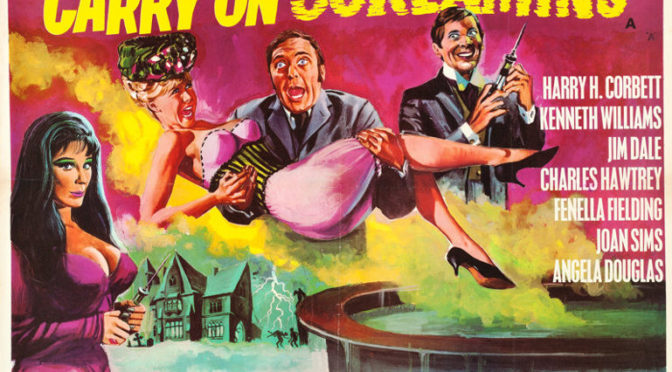

This reached American theaters in April. Although we Yanks would not be able to appreciate the British in-jokes, it's still a lot of enjoyably silly fun. It's very nicely filmed for something so goofy, too.